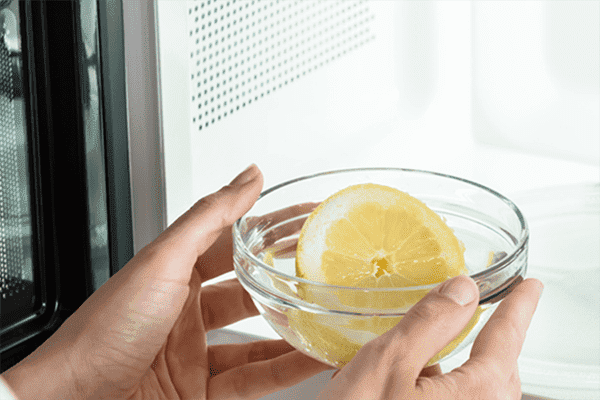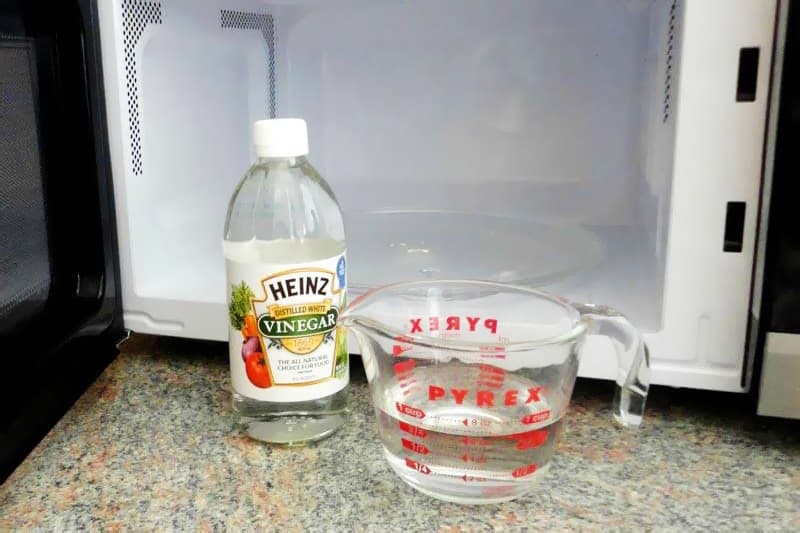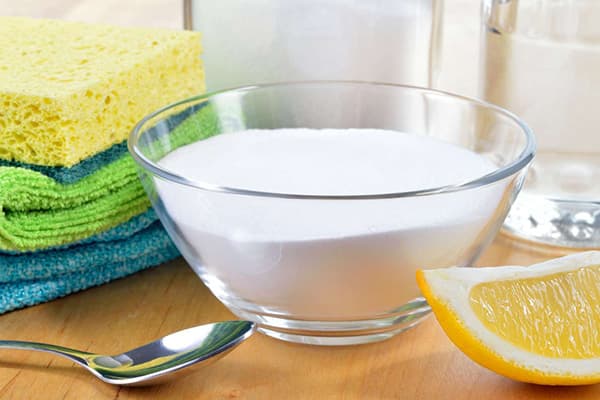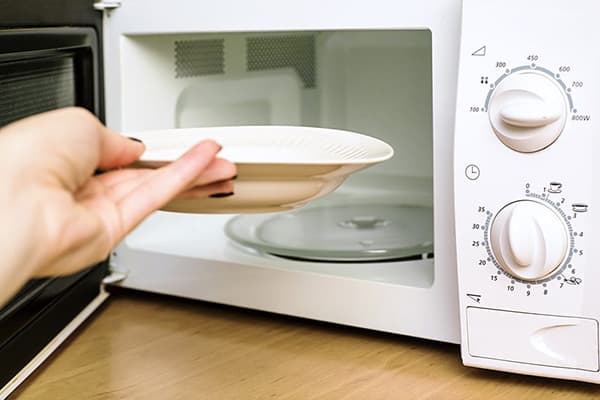How to clean the microwave inside the home in 5 minutes?
Content:
A microwave is an integral part of household appliances in almost any modern family. However, saving our time on cooking and heating, it more than takes it away when it is time to wash it (after all, food particles inevitably remain on the walls, baking and drying out over time). But this is if you do not know how to wash the microwave quickly and easily at home. But such methods exist.
General recommendations
Cleaning the microwave oven may turn out to be unsafe and may even lead to damage to the device if you do not follow basic rules. They are really very simple, but they help to avoid many problems.
- Before you start cleaning the microwave oven, it must be de-energized: unplug the plug from the outlet. Further, the plug must be protected from accidental contact with water: wrap in polyethylene.
- To remove old spots, you can not use metal sponges (especially not try to scrape them with a knife), hard brushes, cleaning products with a large abrasive in the composition. Otherwise, the furnace coating may be damaged.
- Many elements of microwave ovens are sensitive to moisture. This can cause damage to the home helper. Therefore, it is necessary to handle the water very carefully during cleaning.
- To clean the device from frozen fat inside, it is categorically not recommended to use products containing chlorine, hydrochloric acid and other aggressive components.
- It is only necessary to clean at home only the external coating, without disassembling the oven, even if there is no doubt about the presence of dirt inside the case. Engage in such work should be a professional.
- It is better to find a minute and wipe the oven immediately after food has got on it, without waiting for the dirt to accumulate and dry. After all, they can not only become a medium for the propagation of microorganisms and a source of unpleasant odors, but also get into heated dishes.
Purchase a special protective plastic dome to cover food when reheated. This will prevent food particles from splashing inside the microwave.
To clean microwave ovens, you can use the following tools:
- lemon juice;
- citric acid;
- vinegar
- vinegar essence;
- soda;
- filtered water.
Note: clean with water - the softest and most gentle. It is suitable for stoves for which products with acids or soda are too aggressive.
Lemon Against Mud
If the problem still arises, simple tools available in the arsenal of almost any housewife will help to quickly and effectively cope with it. One way is to clean the microwave with lemon or citric acid. These substances help to defeat not only dirt, but also the unpleasant odor that may remain after some dishes.
Acids will need about 30 g - the powder is diluted in 450 ml of boiling water. After the solution cools down, it is placed in dishes intended for microwave ovens, and the device is turned on at maximum power for 5–15 minutes, depending on the scale of the “disaster”.
For the next 5 minutes, the oven should remain closed so that the vapors formed work with contamination, softening it. Then you can wash it with a sponge slightly moistened with a mild detergent and wipe it with a dry kitchen towel. Sometimes just rubbing is enough. If the spots remain, you can repeat the procedure or wipe the dirt with a cloth moistened with the same lemon juice.
Natural lemon juice is diluted with water in a ratio of 1: 1. At the same time, the peel remaining after squeezing the juice is put into the water, and the oven is turned on not for 15, but for 20-25 minutes, since the acid concentration in the juice is slightly lower than in the granulate.
By the way, with the help of lemon it is possible to rid the microwave oven of greasy pollution not only from the inside, but also from the outside. To do this, wipe the outer surface of the door with a slice of lemon, and then with a sponge dipped in detergent.
Vinegar as an alternative
If there is no lemon at hand, just table vinegar (9%) will help to clean the microwave in just 5 minutes. This method is as effective as the previous one, and in advanced cases it can be even more effective. The meaning of the procedure is the same: when heated, vinegar begins to evaporate, and the acid contained in these vapors penetrates deep into the mud, softening it.
The only drawback of this method is that vinegar has a rather pungent odor that remains in the microwave after processing. To get rid of it, you can put for a while inside the device several slices of lemon or tablets of activated carbon. Or simply leave the oven open until the acid fumes are completely weathered.
To quickly wash the microwave oven in this way, you need to dilute 45 ml of vinegar in 450 ml of water. If it is intended to use vinegar essence, then no more than 10 ml of water will be needed for this volume of water.
The solution is poured into a special bowl, set the maximum power and time from 5 to 10 minutes (proportional to the amount of contamination). Allow to stand for a couple of minutes and wipe all surfaces - walls, grill, plate, door - with a kitchen sponge. You can repeat the action if not all contaminants were washed.
If necessary, pre-wipe all surfaces with a sponge or cloth with detergent.
Vinegar can also easily dissolve contamination on the outer surface of the microwave door.
How to use soda to clean the microwave oven?
There are two ways to clean the microwave with soda: soda solution or soda paste. And you can use both methods in turn, “finishing” with the help of wet soda what has not departed after the solution.
To prepare the solution, about 3 tablespoons of soda are diluted in a liter of water, put in a microwave oven at maximum power and boiled for 10 to 20 minutes. Then wipe all surfaces with a damp cloth or kitchen towel. If the dirt remains, you can repeat the procedure by adding 3 tablespoons of vinegar to a bowl of soda solution.
You can try washing the microwave oven with soda pulp made from soda and water in a 2: 1 ratio. This paste is applied to contaminated places and left for several minutes, after which it is thoroughly wiped with a cloth or napkin.
Dried stains from food debris and fat are well removed with a soap-soda composition. About 2 tablespoons of soda are taken per 50 ml of water, approximately the same amount of ground soap is crushed and well soaked in water. The mixture must be thoroughly mixed until it becomes homogeneous. After that, it is applied to the sponge and the dirt is washed in the microwave.
Delicate way
Microwave ovens have various internal coatings: bioceramics, stainless steel, heat-resistant enamel. The latter is very sensitive to external influences. This coating should not be rubbed with abrasives or treated with acids, as they can damage it. Therefore, it is impractical to use lemon, soda and vinegar to clean them.
For such delicate models (as well as for light pollution on other types of coating), there is a method that is as easy as possible to influence: you can wash the enameled microwave with ordinary filtered water.
Since only water vapor is used as dirt solvents in this method, the exposure should be long: at least 25 minutes. Then you need to wait another 10 minutes to give the dirt steam properly.After that, you can use a mild detergent that does not contain abrasives and wipe it with a dry, clean cloth.
True, this method has one caveat: it is advisable to carry out cleaning as often as possible - at least 2 times a month so that the pollution does not go into the “uncontrolled” phase: it does not dry out and does not bake. Otherwise, they will have to be steamed several times, and this is an unreasonable waste of electricity.
Of course, there are special industrial facilities for washing microwave ovens. But, firstly, they are quite expensive, and secondly, it is still chemistry. If its particles are not completely washed out (and it is not always possible to visually determine this), its vapors will be ingested when the oven is used further. In addition, people who are prone to allergic reactions should not be discounted, and working with such substances may simply be contraindicated. That is why folk methods are so popular.
But of course, the best way is not to pollute. Using protective caps, wiping the surface of the microwave after each cooking, the problem of removing persistent contaminants can be completely avoided.




